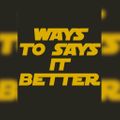“Democracy” vs. “Republic”: Is There a Difference?
You’ve likely heard countries like the United States or France called both democracies and republics. Is that accurate? Are the terms interchangeable, or do they mean different things?
Don’t worry if you’re confused—these terms are often used loosely, especially during heated election seasons. Let’s break down what they share and what distinguishes them.
What does democracy mean?
A democracy is defined as “government by the people,” where supreme power rests with the people and is exercised either directly or through elected representatives under a free electoral system. A country with this form of government is also referred to as a democracy.
Democracy takes two primary forms:
1. Direct democracy – Citizens vote on issues themselves.
2. Representative democracy – Citizens elect officials to make decisions on their behalf.
The word democracy dates back to English around 1525–1535, derived from the Greek dēmokratía (“popular government”). The oldest known democracy was in ancient Athens, where the dêmos (people) held krátos (power). However, voting rights were limited to certain non-enslaved men—far different from modern democracies.
What is a direct democracy?
In a direct democracy, citizens vote directly on policies. For example, if a town must choose between repairing sewers or roads, the decision is made by public referendum. Historical examples include Athenian democracy, while modern examples include referendums like Brexit (2016) or Scotland’s independence vote (2014).
What is a representative democracy?
Most democracies today are representative democracies, where citizens elect leaders to govern on their behalf. Instead of every voter deciding on each issue, representatives (like mayors, legislators, or members of Congress) make those choices. This system balances efficiency with public accountability.
What does republic mean?
A republic is “a state where supreme power rests with the voting public and is exercised by elected representatives.” Sound similar? It should—many modern democracies *are* republics.
The key distinction is that a republic is **not ruled by a monarch** but by representatives (often a president) who serve the people. This is why countries like the U.S. and France are **democratic republics**: power lies with the people, exercised through elected leaders.
However, not all republics are democracies. For example:
- North Korea officially calls itself the Democratic People’s Republic of Korea, yet it’s an autocracy with sham elections.
- The Republic of Venice (697–1797) was an oligarchy where only wealthy elites could elect the doge (leader).
The word republic comes from the Latin rēs pūblica (“public affair”), emphasizing that governance belongs to the people, not a monarch. Ancient Rome was a republic for nearly 500 years before becoming an empire.
So, is the United States a democracy or a republic?
Practically speaking, it’s both. In casual usage, democracy and republic are often interchangeable. For precision:
- The U.S. is a representative democracy.
- Structurally, it’s a federal presidential constitutional republic.
The crucial takeaway? In both systems, power lies with the people through voting. So if you’re eligible—vote! That’s what sustains true democracies and republics.
© 2025, Aakkhra, All rights reserved.
โฆษณา
- ดาวน์โหลดแอปพลิเคชัน
- © 2025 Blockdit


